Brie cheese substitutes can be a game-changer to perfect your dishes at a lower cost. Indeed, it’s non-debatable for Brie’s high price, and it is a tribute to French royalty and luxurious feasts.
With that in mind, here comes my list of top replacements, so you don’t need to look any further. You can broaden your search from French-based, Italian-based to Swiss-based options. Follow me and see how you can get each oomph for your recipes!
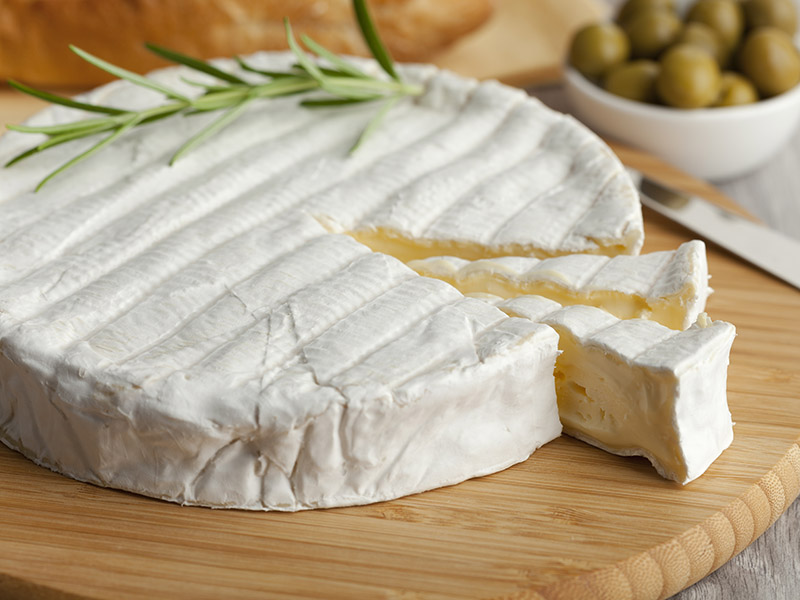
Table of Contents
What Is Brie Cheese?
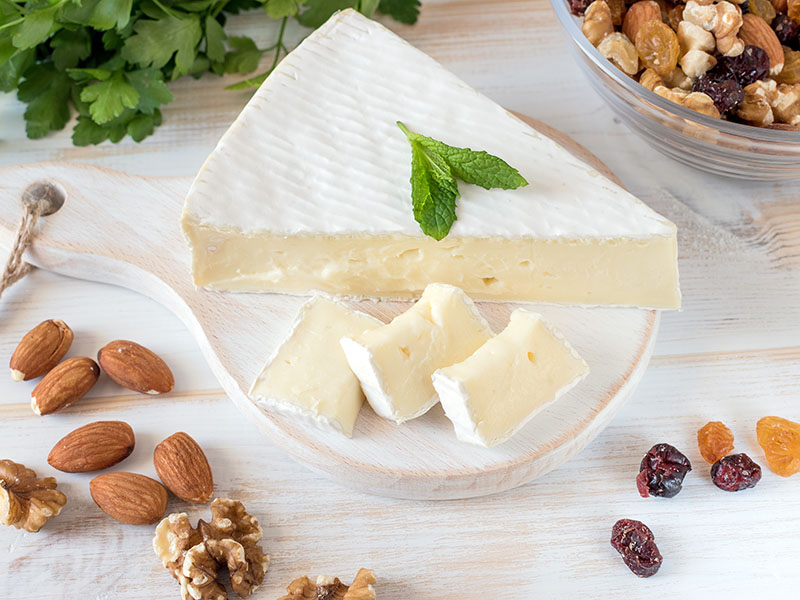
Brie cheese is famous as France’s delicacy, made from cow’s milk. This renowned cheese gained its title “Le Roi des Fromages” (French) or “King Of Cheeses” (English). Indeed, Brie is a tribute to French royalty and a staple in get-togethers and holiday parties worldwide, served just before dessert.
Brie got its name from a historical region of northern France, Brie, taking 4 hours from Paris. Typical Brie cheese often comes in a flat shape with a distinct runny texture, a white bloomy rind, and a creamy interior. Brie is a soft-ripened and classic French cheese.
What makes Brie peculiar is its white mold rind surrounding the creamy interior. Penicillium mushrooms are the material to create Brie’s white outer coating (rind). Brie cheese is ready to serve when ripened. At that time, the outside is firmer, and the interior becomes resilient and bouncy.
Do you know the shelf life of Brie cheese is one of the reasons for its high price. Thus, many homemakers try to seek the best substitutes for Brie at a lower cost.
Take a quick look at Brie cheese’s secrets and fun facts!
How Does Brie Cheese Taste Like?
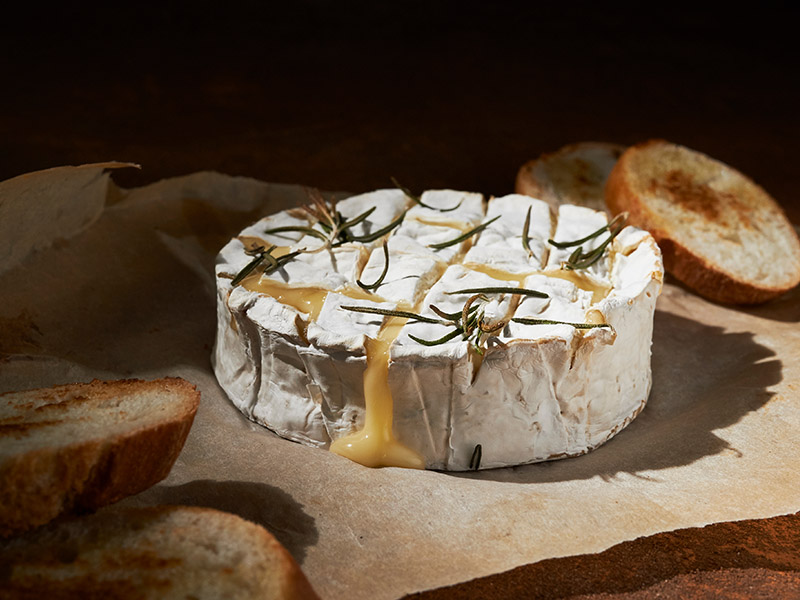
Brie cheese’s primary material is the particular cow’s milk in France through a unique making process, hence the unique taste of Brie cheese. Its distinctive creamy and runny texture results from microbial coagulant, ferments, and salt.
Your tongue’s tip can feel Brie’s mushroomy and salty flavor at the first bite. Then, its strong earthy aroma and cheesy goodness can blow your mind.
Besides cow’s milk, cheeses made from goat’s and sheep’s milk are currently popular, creating multiple flavors for Brie cheese from region to region.
Still, many shy away from an unwanted ammonia scent when the rind ages. No worries, it’s just temporary and unharmful. Let your Brie sit at room temperature for about one hour before serving for the best flavor.
14 Enticing Brie Cheese Substitutes That You Can Not Overlook
Here comes a list of Brie cheese substitutes, mainly from France and Italy. After reading this core part, I bet you will get more awe-inspiring stuff and discoveries: the best options with similar texture, look, and flavor to Brie.
First off, take a look at this summary table below:
1. Camembert
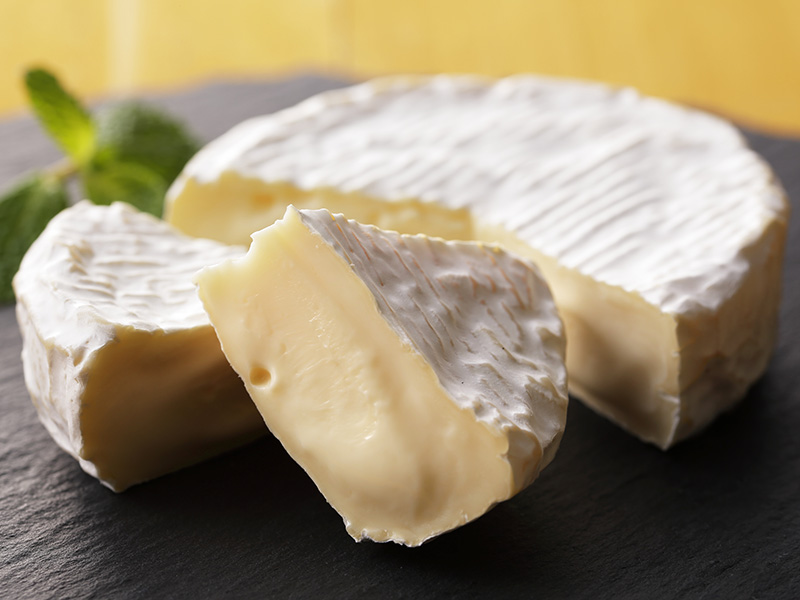
Many know about the competition between Camembert and Brie cheese due to their similarities. That’s why Camembert is the no.1 in the list of Brie’s alternatives. It is a native French ripened cheese with a peculiar mold rind and a round shape about 5 inches in diameter.
Camembert tastes well to go with fruits, baguettes, jam, honey, and nuts. Like Brie cheese, Camembert matches with Beaujolais and red Bordeaux.
Camembert and Brie taste and look pretty similar, yet Camember’s taste is somewhat bolder and deeper owing to the mushroom undertone. This Brie-like cheese’s texture is crumbly at first, yet soft and seamless if adequately ripened.
Notwithstanding, Camembert is illegal in the U.S. The strict FDA (Food and Drug Administration) doesn’t allow all unpasteurized cheeses due to their potential pathogens and high-level bacteria level, notably Camembert de Normandie (1).
Click here to know more about Camembert’s making process!
2. Coulommiers
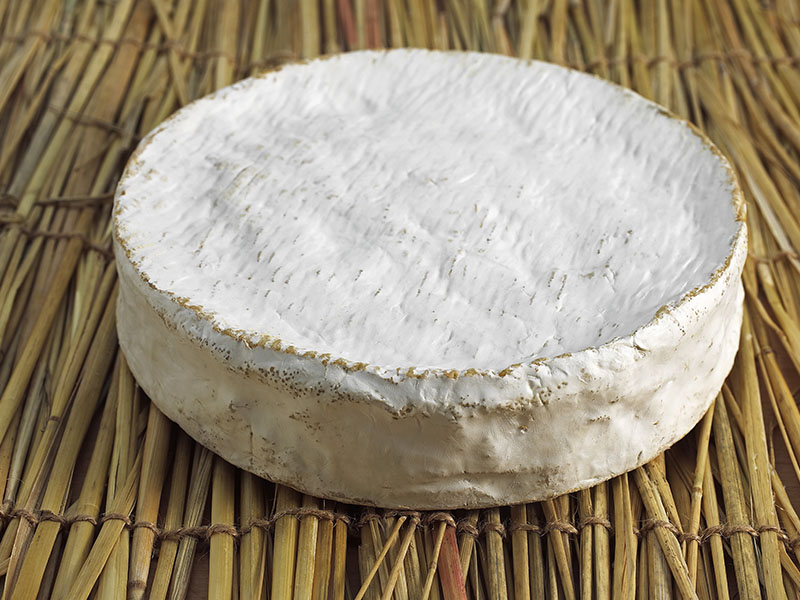
Coulommiers got its name from its hometown, “Coulommiers” commune in Seine-et-Marne region, France. Its basics are raw or pasteurized milk. As Coulommiers has the same characteristics as Brie, people claim it as the Brie cheese’s ancestor.
People also call the modern Coulommiers “Brie petit moule” (Brie in little form). With a smaller size, Coulommiers is convenient for transportation.
This cheese comes in a thicker, smaller size and is less popular than Brie cheese. It shares the generous nutty, savory, buttery aroma of mushroom and garlic alongside the creamy texture.. It’s also a soft-ripened cheese like Brie.
It’s enticing to blend Coulommiers with berries, apples, and pears after a feast or big meal. A bottle of red Bordeaux or Sauvignon Blanc is good to go as well. You can replace Brie with Coulommiers in any recipe requiring Brie as the ratio 1-1.
3. Reblochon
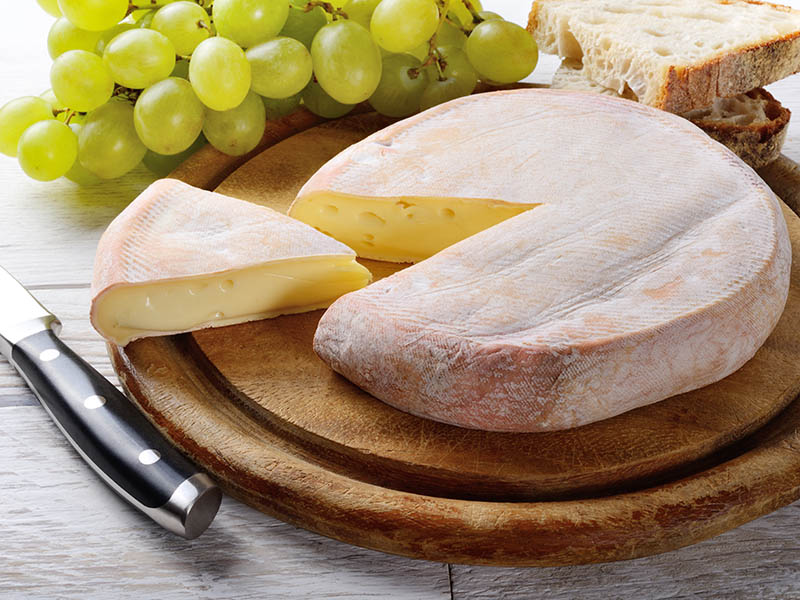
The juiciest cheeses of France can not lack Reblochon. It derives from the mountains of Haute Savoie. Reblochon cheese got its name from the word ”reblocher”, meaning “to pinch a cow’s udder again”. (2)
It’s nothing but an epic alternative to Brie cheese. It looks eye-catching with a yellow or orange rind outside and spreads an intense and bold aroma, rocking you in no time.
It reaches its perfect point while combining with Beaujolais and Savoie. Beyond that, Reblochon matches amazingly with bread, nuts, and dried fruits like figs, raisins, or apricots. Interestingly, Reblochon is perfect for winter dishes like “Tartiflette” (a dish from Savoy in the French Alps).
Besides that, typical Reblochon appears creamier and softer than Brie.
4. Explorateur Cheese
Many may find it weird at first to hear of this name. M. Duquesne of Fromagerie du Petit Mori invented Explorateur cheese in 1958 in France and then named it after the first U.S satellite “Explorer’’.
It leaves you a mild buttery flavor once consumed. The mildly firm interior will become runny when the cheese ages. In most recipes, this triple-cream cheese’s fat content is around 75%, going incredibly well with red wine. Its mildly salty and tangy tone helps it fantastically match bread and fruits.
Explorateur cheese has a smooth unpressed texture with its peculiar downy and white rind. Thanks to mushrooms and truffles, Explorateur reaches a subtly rich and buttery taste, inspiring you at first use.
5. Chevre Cheese
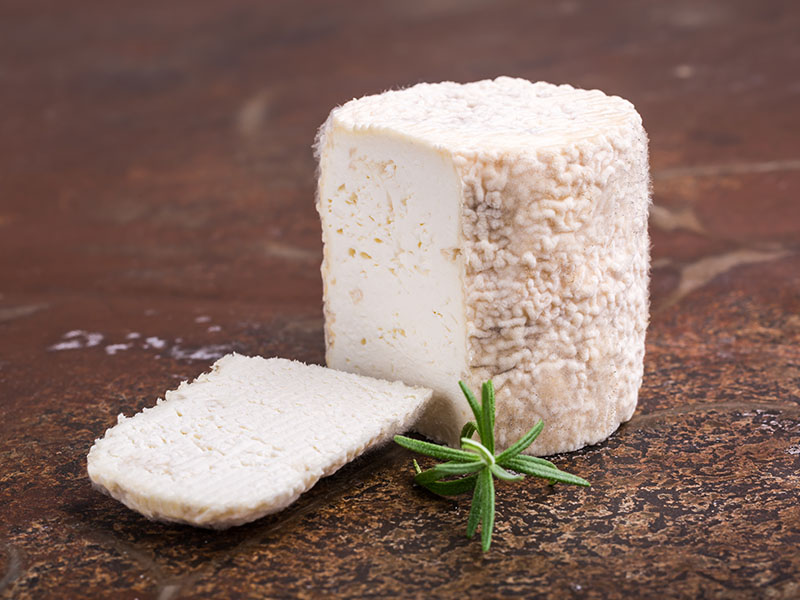
Chevre cheese is artisanal French goat cheese. Chevre absorbs the natural moisture from caverns, obviously growing its unique nuances.
The Brie-like cheese has a silky, soft, and creamy texture in its young phases. Once matured, its interior grows crumbly and dense while its crust hardens. Overall, goat milk fosters Chevre’s tangy, velvety flavor and an earthy undertone.
This goat cheese contains the same properties as Brie but more protein and calories. Chevre cheese can replace Brie when served with fruits, pasta dishes, crackers, bread, and salads. Also, Chevre matches incredibly with Sauvignon Blanc.
Young Chevre can fit for casseroles and sandwiches as its texture seems to mimic Brie at that time. Notwithstanding, Chevre cheese will somewhat differ from Brie while it ages and hardens.
6. Cantal Cheese
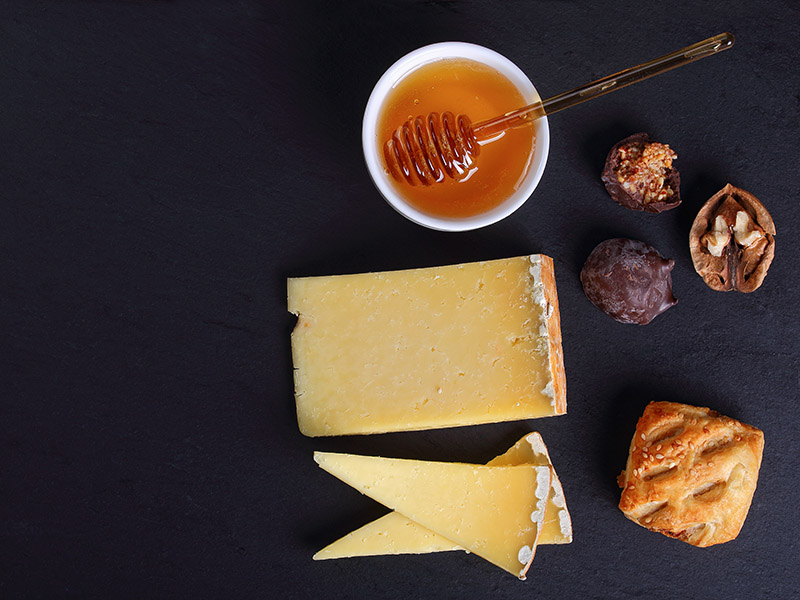
A semi-hard cheese titled Cantal can be a Brie alternative. It comes from the Auvergne region, France. Cantal cheese’s name derives from the Cantal mountains. It dates back to the time of the Gauls (from the Iron Age to the Roman period).
Cantal cheese consists of 3 main types: Cantal Entre-Deux/Cantal Doré (aged 3 – 9 months), Cantal Vieux (aged more than 8 months), and Cantal Jeune (aged 1-2 months), based on their maturity and traits.
Cantal Jeune has the closest taste to Brie. It has an ivory crust with a hazelnut undertone or pale yellow tint outside.
The cheese performs well as a Brie’s alternative with its milky, sweet, and fresh tone. In particular, it’s a marvelous harmony to combine the yummy cheese with Cabernet Sauvignon wine, fruits, salads, gratins, and cheese fondue.
7. Saint-André Cheese
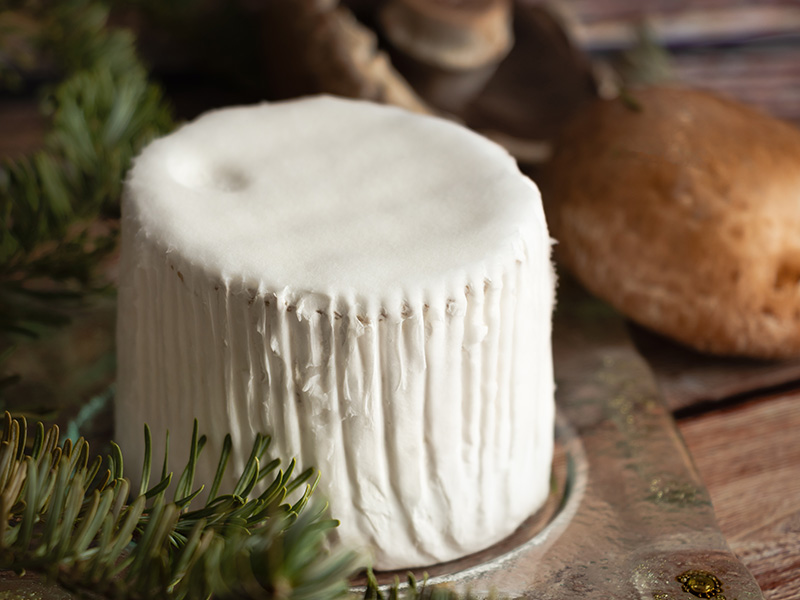
The top renowned triple-creme cheese globally can’t overlook Saint-André cheese. Its hometown is Villefranche-de-Rouergue, Aveyron, France.
Saint-André’s main component is cow’s milk, with about 75% of fat content. Hence, the soft white French cheese gets a slightly greasy and buttery aroma.
Nothing seems to beat dessert wine, light beer, and a slice of pear regarding its best pairings. It tastes wonderful while served with toast and crackers as well.
Learn more about Saint-André cheese to properly incorporate it into the menu!
8. Toma Cheese
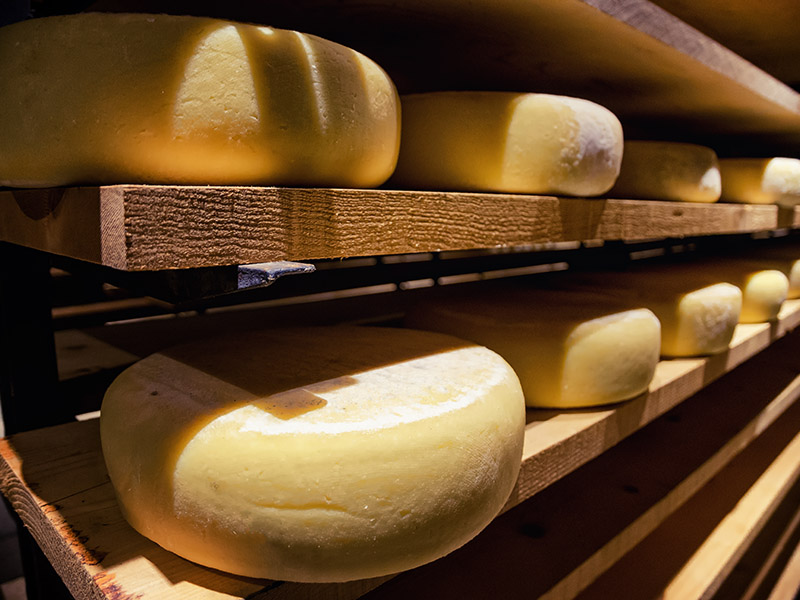
Toma has a creamy and seamless texture and Brie-like taste – buttery and slightly salty, so it’s one of the excellent alternatives to Brie. It’s a terrific idea to have Toma in pasta, burgers, fruits, and soups.
A bottle of Sauvignon Blanc or lightly-oaked Chardonnay with Toma will spice things up incredibly, besides Toma’s noted melting qualities. Italians serve Toma as a versatile table cheese. Interestingly, Toma often pops up in regions wherein classic Fontina is not popular.
You may yet know a lesser-known fact about Toma cheese: It’s predominantly produced in Northwestern Italy’s Piedmont and Aosta Valley areas.
9. Fromage D’affinois
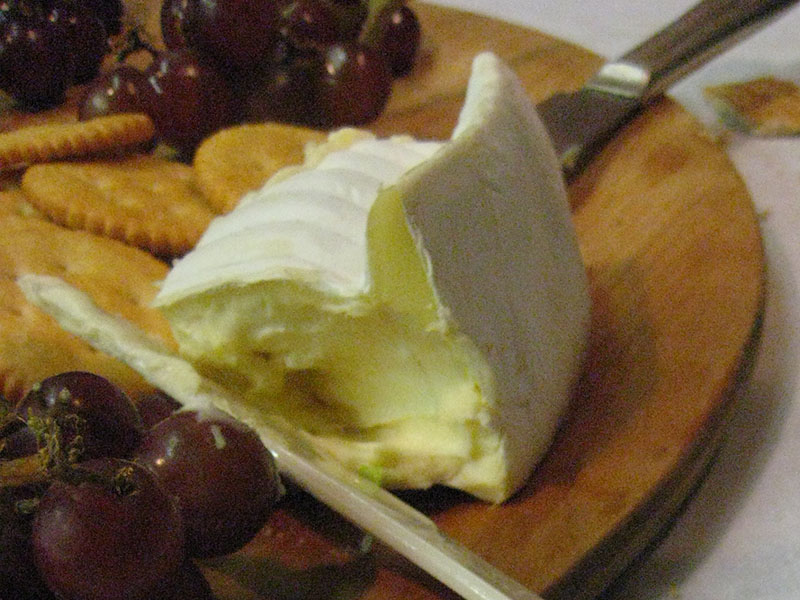
Fromage D’affinois cheese goes well with fruits like grapes.
Fromage D’affinois is a pasteurized cow-milk cheese having an earthy and slightly sweet taste like Brie. Although it has the same properties as Brie cheese, Fromage D’affinois feels more pungent.
Interestingly, the pasteurized and soft-ripened cow’s milk cheese can outweigh Brie sometimes. Indeed, many users prefer Fromage D’affinois to Brie because of its seamless and silk texture.
Its incredibly intriguing flavor gains through ultrafiltration (3), focusing the milk’s components only to allocate them on the cream surface.
Its runny texture and awe-inspiring taste accompany Sauvignon Blanc and Chardonnay wine, fruits, and crusty bread.
10. Paglietta
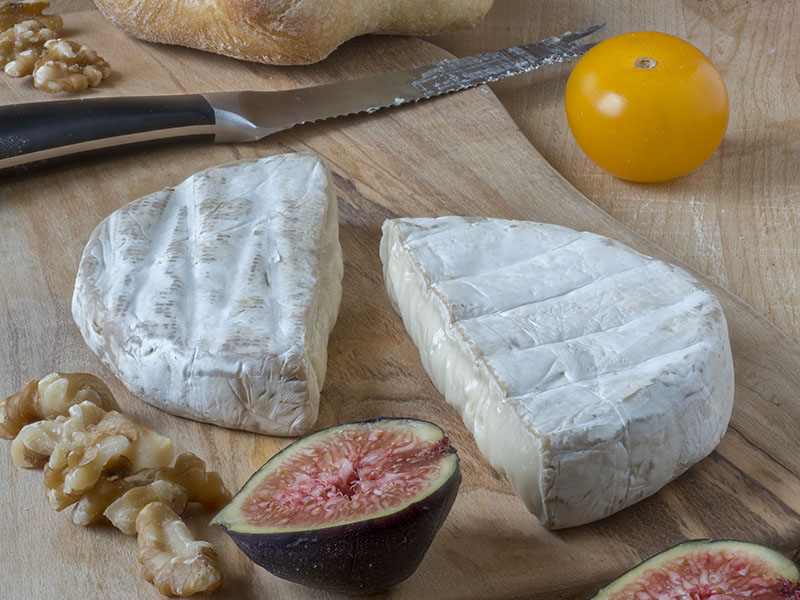
Paglietta has built its name for quite some time. The Italian cheese is awe-inspiring like cheddar and has a melty texture and versatile flavor.
Paglietta comes in three variations: Full-fat, Semi-fat, and Cremino, all nutty and bold, somewhat similar to Brie’s taste.
Once matured, its runny and moist texture captivates any Italian cheese lover while paired with Red Bordeaux wine, crackers, and fruits.
11. Fontina Cheese
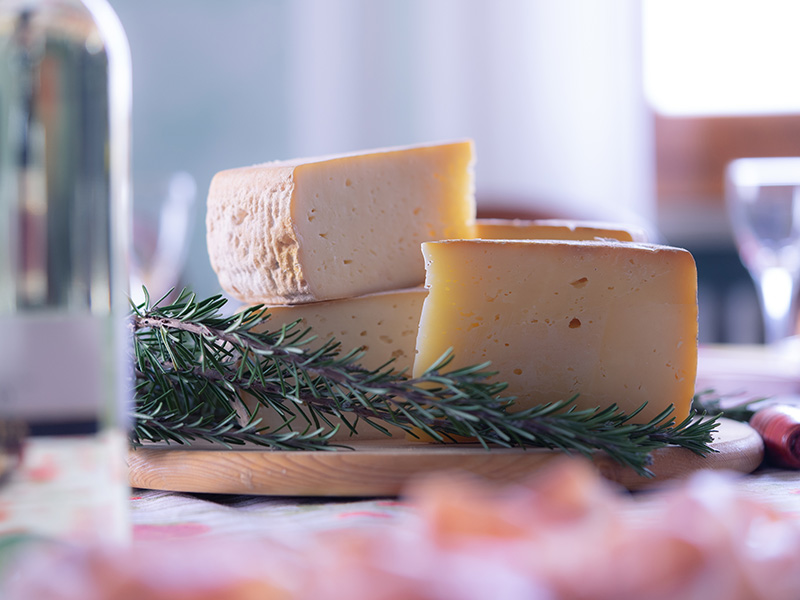
Fontina is an ordinary cheese easily found in local Italian stores. Its other names are Fontinella, Fontella, or Fontal.
The semi-hard cheese from Aosta valley unveils a tone of creamy, buttery, and sweet vibe with a rich nutty undertone. That’s awesome to have Fontina cheese as an alternative to Brie cheese in most culinary recipes.
The Italian Fontina works wonders in dessert recipes or melting in hot dishes like Baked Fontina. This dish is a hot dip for bread. This cheese is also suitable for sandwiches, sauces, pizzas, and pasta dishes.
Fontina often tastes best in summer and autumn, stirring any Italian cheese lover. A bottle of Cabernet Sauvignon can brush up Fontina’s taste amazingly.
Discover the best Fontina cheese under the expert’s eyes.
12. Mozzarella Cheese
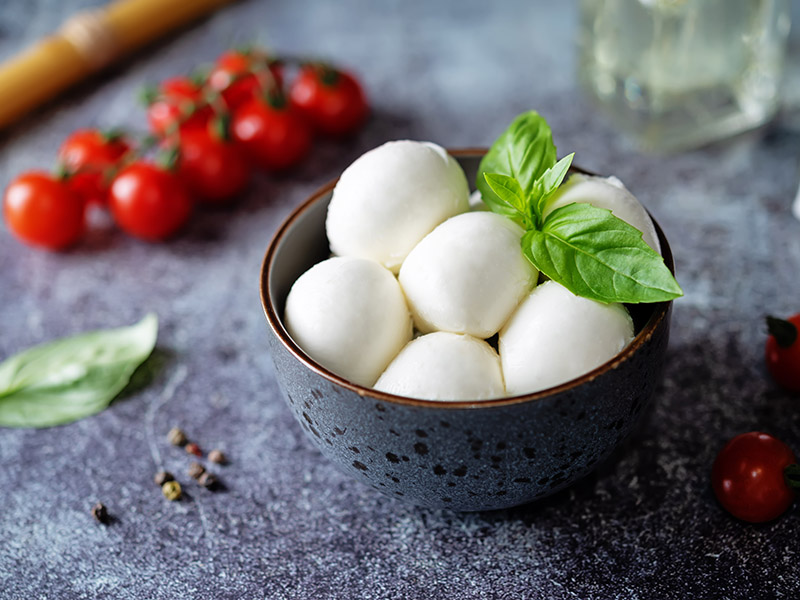
Another Italian cheese, Mozzarella, can catch your eyes with its beautiful white and creamy look. Mozzarella cheese comes up with two names: Bufala Provola and Mozzarella Di Bufala. Still, current Mozzarella also contains goat and cow’s milk as its primary ingredient.
This Italian is a whole semi-soft and smooth cheese combined with the fruity and sweet aromas to the mouth. Hence, it’s a superb ingredient to pair with crackers, fruits, prosciutto wraps, and roasted vegetables.
Beyond that, Mozzarella comes in two versions in the daily market: firm block and soft version. To best replace Brie, let’s go for the soft version to reach the best flavor and texture.
13. Cambozola
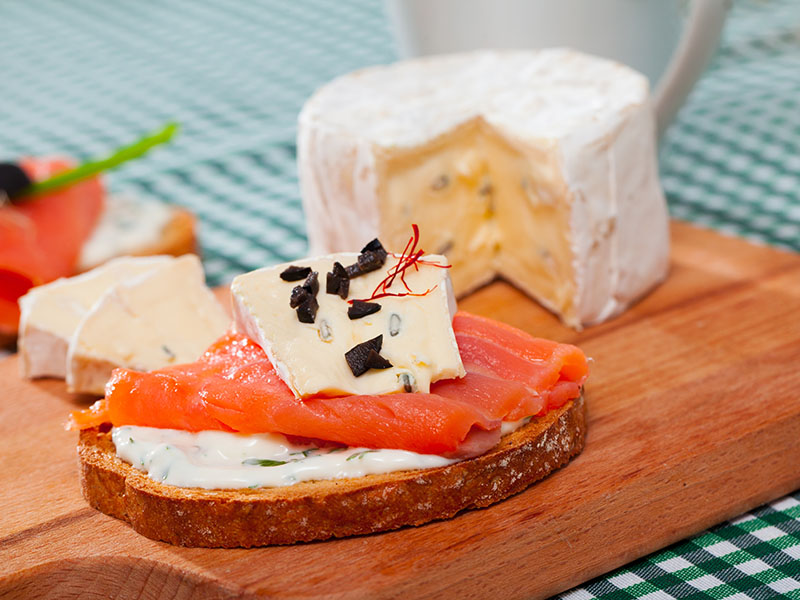
Cambozola is an enticing choice if you seek an excellent German cheese. It’s a combination of Italian Gorgonzola and French soft-ripened triple-cream cheese.
Cambozola is a potential figure in Brie’s alternatives list with a more sophisticated, bolder flavor and softer creamy texture.
It’s wide-reaching worldwide, from the local stores to supermarkets and commercial centers. A bit of acidity with the rich cheese content creates a perfect fit for typical wines, fresh fruits, salads, and roasted potatoes.
Enjoy your free time with Cambozola and fig grilled cheese!
14. Raclette
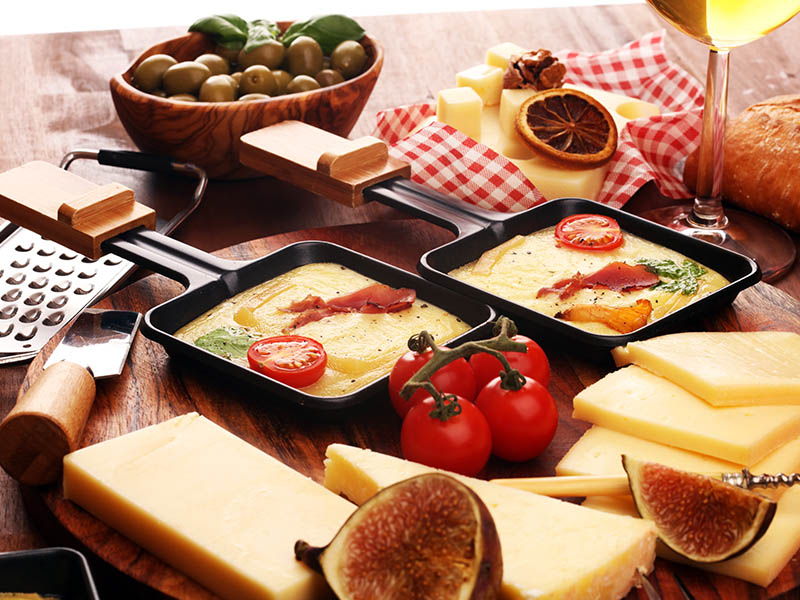
It’s time to go for Swiss cheese, Raclette. The word “Raclette”’ is from the verb “racler” (meaning “scrape”) in the French-Swiss dialect (Walliserdialekt). Its taste ranges from mild and milky to piquant. Raclette is a semi-hard cheese with each slice less than 1 cm.
The basics of Raclette are cow’s milk or sheep’s milk. Though Raclette is not a popular substitute for Brie, it doesn’t mean that it can’t replace Brie, notably for grilling and melting.
For any hiking trip or on a cold winter day, Raclette is a fantastic meal with short-time preparation required. Use it with dry white wine, potatoes, grilled vegetables, and bacon to best serve Raclette.
FAQs
You may pose more questions surrounding Brie cheese and its substitutes. That’s why “FAQs” is one of the most-awaited and catchy parts. Let’s head to some handy questions and answers below:
Your Kitchen Runs Out Of Brie Cheese? Go For Alternatives!
Brie cheese captivates you with its outstanding flavors without much introduction. It contributes to most families’ dishes, festive celebrations, and warm-ups.
Imagine your fridge has no leftover Brie cheese one day; no worries, as there are myriad ways to spice your meals up instead. Let’s throwback on my list every time you feel low on finding Brie cheese substitutes. They are all worth trying once.
Last but not least, it’s handy to grasp the regular pairings of each type of cheese above. As such, you’re the master in your kitchen. For more fresh ideas surrounding Brie cheese and its alternatives, drop me some comments without further ado.
Don’t forget to like and share this post if you find it informative and handy!
References
- Journalofdairyscience.org, (2019). Camembert-type cheese quality and safety implications in relation to the timing of high-pressure processing during aging [Ebook]. American Dairy Science Association.
- En.wikipedia.org, (2021). Reblochon
- Pubmed.ncbi.nlm.nih.gov, (2020). Understanding The Differences In Cheese-Making Properties Between Reverse Osmosis And Ultrafiltration Concentrates.
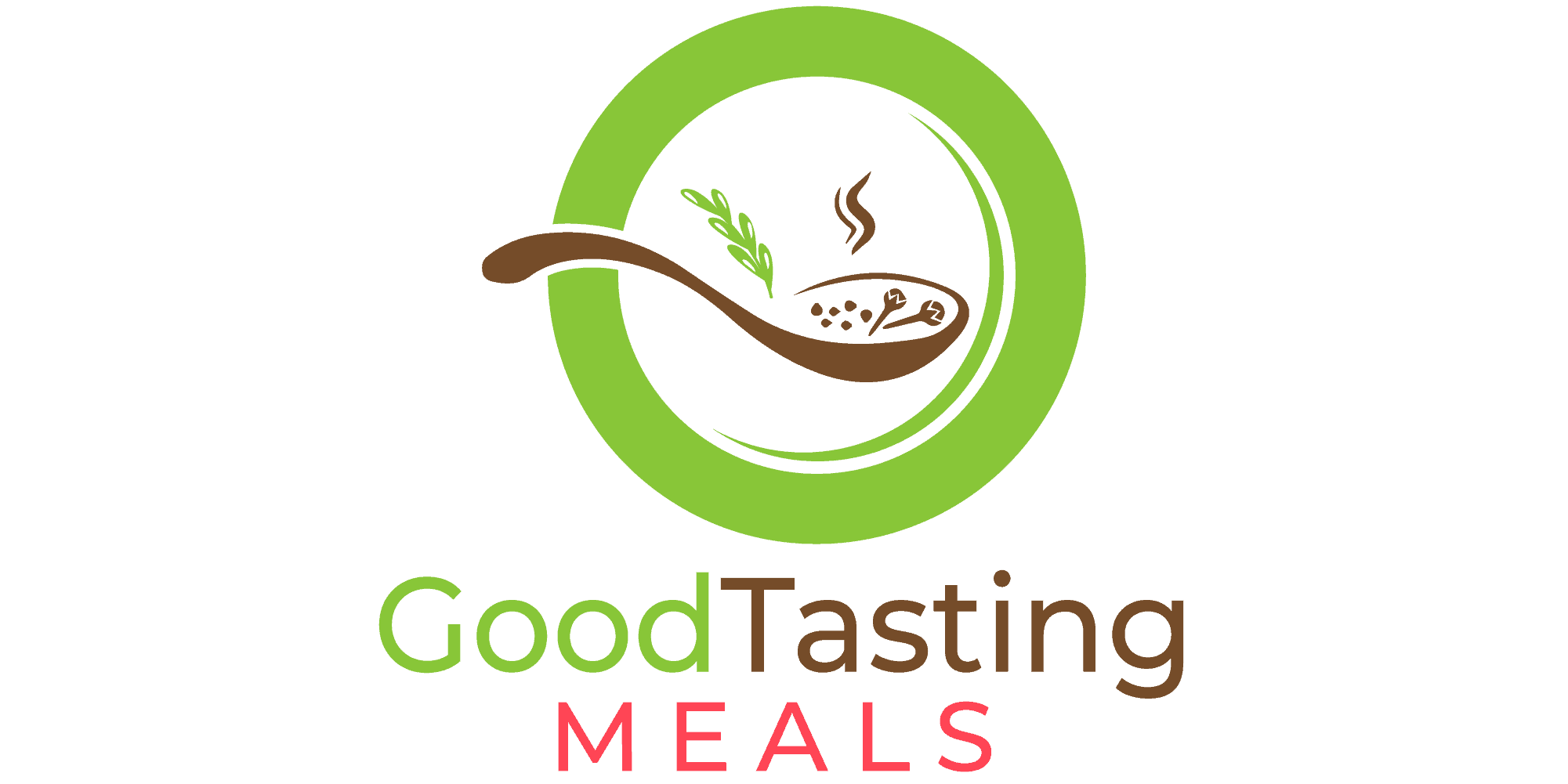
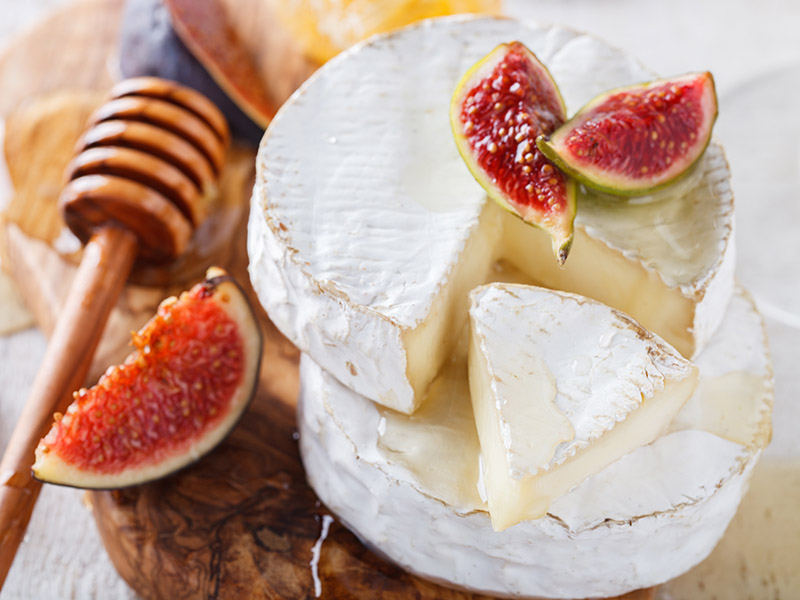

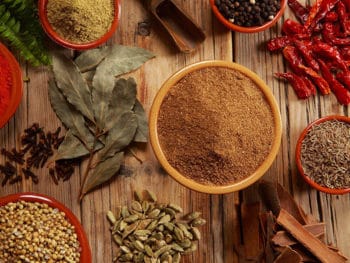
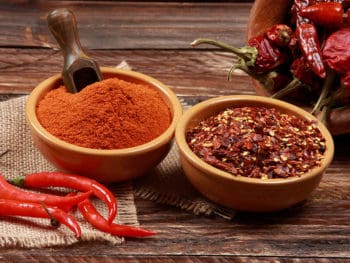
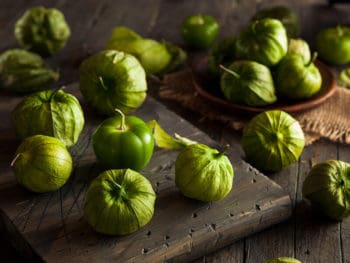
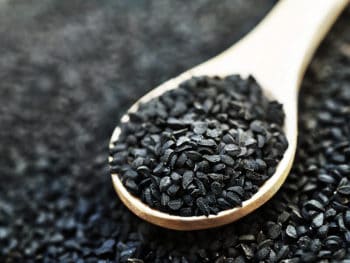
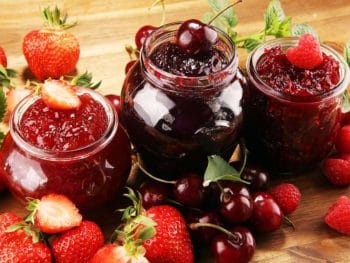
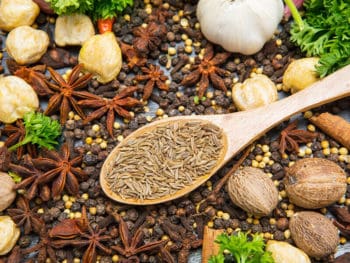
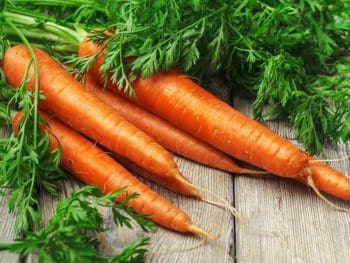
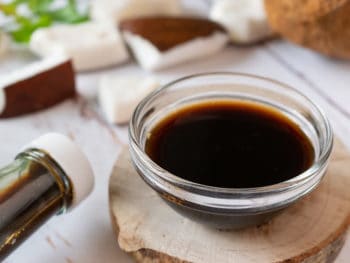
 21 Best Goat Cheese Substitutes To Try 2023
21 Best Goat Cheese Substitutes To Try 2023